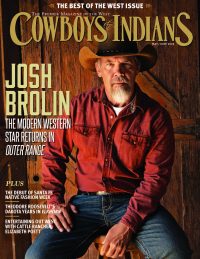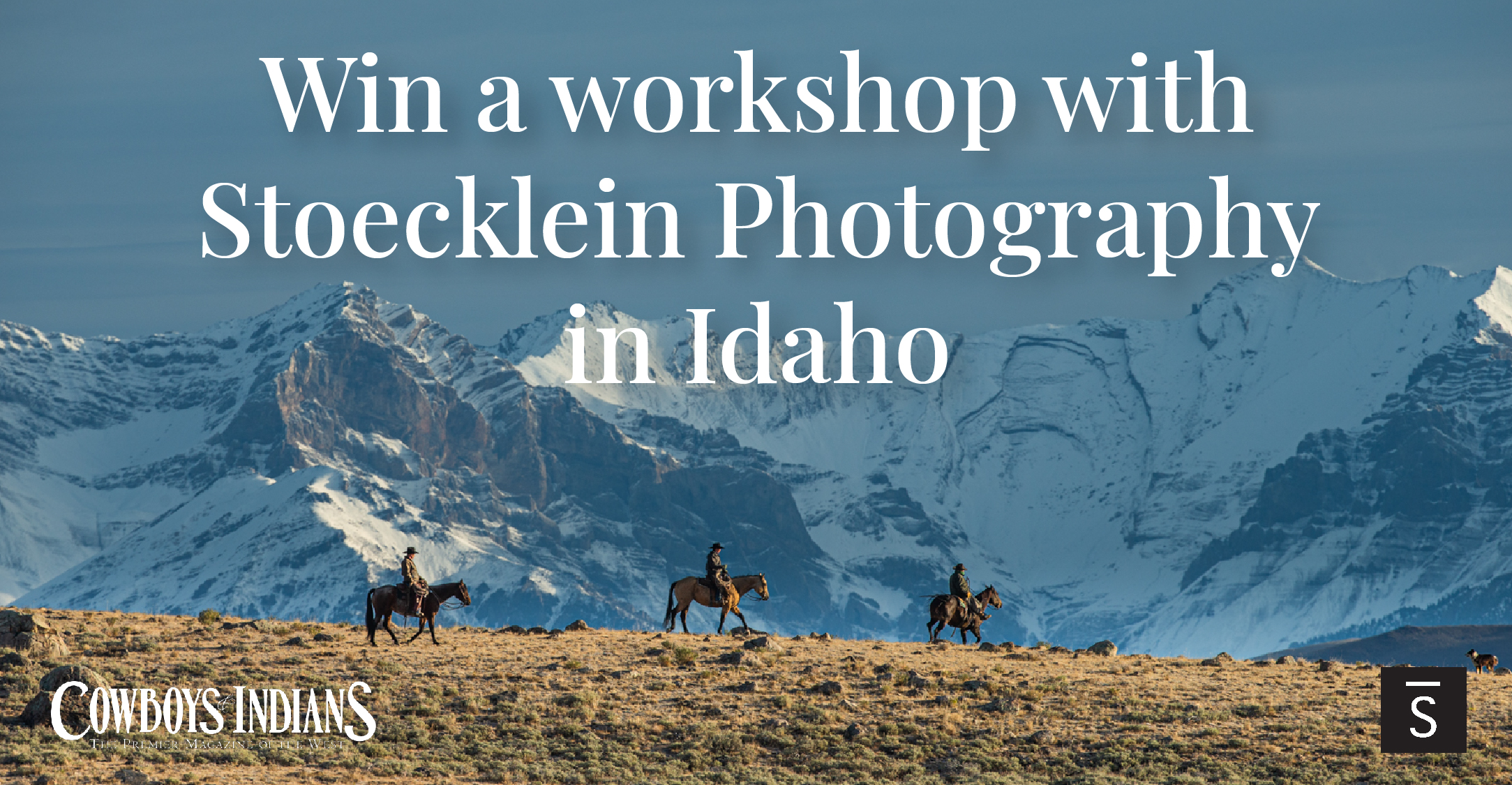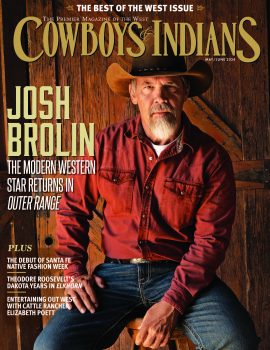After 30 years in the movie business, the multitalented, multitasking actor is finally getting his cowboy and Indian on.
After acting, directing, and screen-writing in a wide array of movie genres, Ethan Hawke has finally gotten a chance to ride tall in the saddle. And it doesn’t look like he’ll be hanging up his spurs anytime soon.
Come fall 2016, he’ll be on view at theaters and drive-ins everywhere in his first two westerns: Ti West’s In a Valley of Violence, a gritty revenge drama very much in the tradition of Sergio Leone and Clint Eastwood, and Antoine Fuqua’s The Magnificent Seven, a remake of John Sturges’ classic action-adventure (which itself was a remake of Akira Kurosawa’s Seven Samurai). And he’s looking forward to filming The Kid, a revisionist retelling of the Billy the Kid-Pat Garrett story directed by Vincent D’Onofrio, Hawke’s longtime friend and Magnificent Seven costar.
But wait, there’s more: Hawke, who already has three books (Ash Wednesday, The Hottest State, and Rules for a Knight) to his credit, recently published Indeh: A Story of the Apache Wars, a compelling and acclaimed graphic novel (illustrated by Greg Ruth) that views the bloody 1872 conflict through the eyes of Goyahkla, later known as Geronimo, and Naiche, son of Cochise.
These Wild West-related projects are merely the latest additions to a lengthy résumé that dates back to 1985, when Hawke made his screen debut as a young teen actor opposite the late River Phoenix in the sci-fi fantasy film Explorers, and includes, along with dozens of film and TV appearances, his impressive array of stage performances (mostly notably, his Tony Award-nominated turn in the 2006 – 07 New York production of Tom Stoppard’s The Coast of Utopia) and his various efforts as a movie director (including his 2006 film adaptation of The Hottest State and the biographical documentary Seymour: An Introduction, a tribute to pianist Seymour Bernstein).
Hawke has earned no fewer than four Academy Award nominations, including two for screenwriting (Before Midnight, Before Sunset) and two for his standout supporting performances as an LAPD officer who discovers his new partner (Denzel Washington) is a violent sociopath in Antoine Fuqua’s Training Day (2001) and an unreliable but well-meaning divorced father in Richard Linklater’s Boyhood (2014). He also has starred in such notable films as White Fang (1991), Reality Bites (1994), Hamlet (2000), Tape (2001), Before the Devil Knows You’re Dead (2007), and The Purge (2013).
And even as he continues to spend time onstage and at his writer’s desk, Hawke just keeps on keeping on with movie work. During the past few months alone, in addition to appearing in back-to-back westerns, he has run the gamut from free-form biopic (Born to Be Blue, in which he plays legendary jazz master Chet Baker) to unsettling thriller (Regression), from romantic comedy (Maggie’s Plan) to inspirational sports drama (The Phenom).
Hawke laughs when it’s suggested that he’s as much of a tireless multitasker as another high-profile multi-hyphenate, James Franco (who, not coincidentally, is slated to costar in The Kid). “Well, James actually does a lot more than me,” he says. “Man, I don’t know what sort of horde of Vikings are chasing him, but he does a lot of things. I have done a lot of different things in my life — but I’ve done them over 30 years. I haven’t been running any races.”
Still, Hawke admits that he benefits from consistently keeping several irons in the fire, on- and off-screen. “It’s really a wonderful thing. See, I’ve been acting since I was 13. So along the way, I’ve needed to think outside of that, to keep my brain curious and myself excited about what I’m doing. Every time I do something new, it makes it very exciting to come back to acting. I learn something new — and go back with new energy.”
C&I caught up with Hawke shortly after the SXSW film festival premiere of In a Valley of Violence, the neo-spaghetti western in which he plays Paul, a wandering ex-solider who’s psychologically scarred by his experiences in the Indian Wars and driven to vengeful mayhem when his faithful dog, Abbie (played by collie Jumpy), is brutalized by small-town ruffians. (“They left me with nothing,” Paul explains. “I’m going to leave them with less.”) Here are some highlights from our conversation.
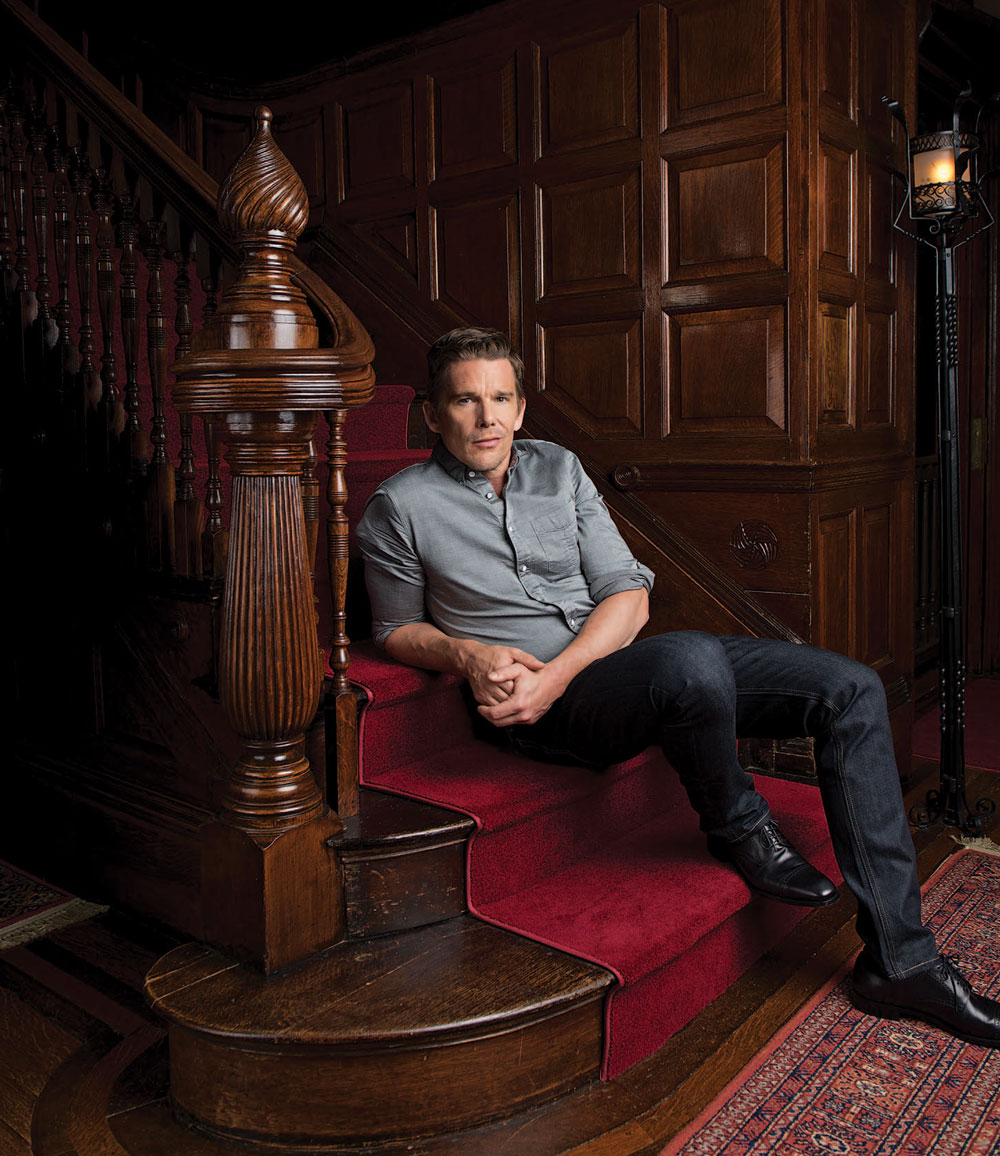
Cowboys & Indians: We often talk to actors who are getting their cowboy on. But it looks like, this year, you’re getting your cowboy and your Indian on.
Ethan Hawke: That’s why I am the perfect headliner for your magazine, I have to tell you. [Laughs.] But it’s true. The graphic novel Indeh ties directly in to the Apache Wars of cowboys and Indians. You’ve got The Magnificent Seven, which is a retelling of that story with a more interesting racial perspective. We have a Native American among the badass seven, Martin Sensmeier [Athabascan and Tlingit], and he’s an awesome actor. And then In a Valley of Violence, where I play a cowboy who is suffering from PTSD after fighting in the Indian Wars.
C&I: In a Valley of Violence was extremely well-received in March at the SXSW film festival in Austin, Texas. It plays very much like a classic spaghetti western. And you make a terrific impact as the protagonist. While you were making the film, did you find yourself channeling your inner Clint Eastwood? Or did you have another role model in mind?
Hawke: No, I have to say that when you’re making a spaghetti western, it’s hard not to stand in the shadow of Clint Eastwood. The Man With No Name and the other characters he played in westerns are some of my absolute favorites. One Sunday afternoon while I was growing up in Fort Worth [Texas], my dad was supposed to take me to church — and instead he took me to an 11 a.m. Sunday matinee of The Outlaw Josey Wales. It was one of my favorite Sundays of my life.
I definitely think In a Valley of Violence owes a great debt to the work of Clint Eastwood, like High Plains Drifter and several others. But I think that what I liked the most about what [director Ti West] has accomplished with our movie is that it manages to be a lot of things at once. It manages to tip its hat to spaghetti westerns, and it manages to tip its hat to the Coen brothers sensibility. And it also manages to have its own voice.
C&I: Actors often talk about how they prepare for playing a character by bonding with other actors who play their friends on-screen. They spend time together, they go out drinking together, whatever. So how did you develop such great chemistry with Jumpy, the remarkable collie who plays your dog?
Hawke: It’s really funny that you say that. Because one of the great acting experiences of my life — and when I say this, people think I’m kidding, but I’m not — was my experience on White Fang. I was a kid — I was about 19 years old — and they sent me off to Alaska. I had six weeks to prepare, to get to know this half-breed wolf. I would wake up and spend four hours in this big pen, and we’d take him on walks. You wouldn’t take him leashed or anything, but we had this huge terrain in which this animal could run, and I’d go out there. It was an amazing acting lesson to try to earn the trust of an animal, because it’s the same thing you are trying to do with people. It’s just you have to do it nonverbally. It’s a lot more difficult because you can’t bullshit a dog. They smell authenticity on you or not.
Actually, all joking aside, the animal trainer who did White Fang with me, Clint Rowe, was a great guy. And he prepared me to work with other animals — like Jumpy. Working with Jumpy and his trainer on this film was so much fun. I was as proud of what I did in those scenes with Jumpy as I am of anything I’ve ever done. There’s a couple moments in the movie where the dog and I have looks that you couldn’t have ever anticipated; they just happened naturally.
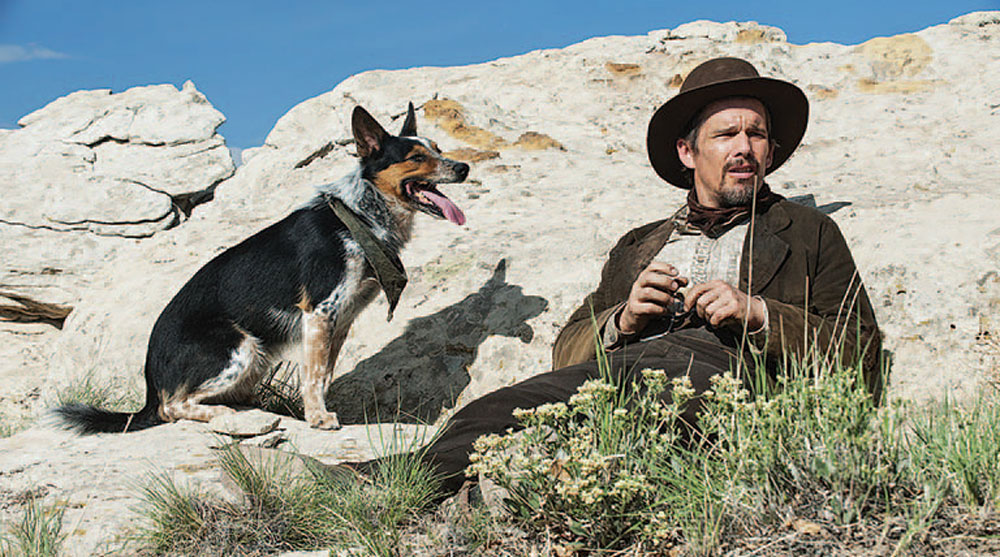
C&I: There are a couple of moments with the two of you where it’s hard to believe what we see on-screen wasn’t tweaked with computer-generated imagery.
Hawke: The best scene — and I was grouchy with Ti, because he didn’t include it in the final cut — but there was this scene where I was walking down the middle of Main Street and my hat blew off my head. And Jumpy ran and chased it down and brought it back to me in shot. It was the coolest thing I’ve ever had happen on camera. I sure hope Ti includes it among the extras on the DVD.
C&I: It’s been said that every actor — and every director — wants to make two things: an Alfred Hitchcock type of thriller and a western. Would you agree?
Hawke: I think that everybody is drawn to the challenge of working inside a genre, and those are generally the genres that we grew up on. At least my generation did, and the generations before me. We grew up watching westerns. There’s something very American about them. And the Hitchcock thing is true, too, because it’s hard to make a good scary movie. It’s easy to make a bad one but hard to make a good one. The same with westerns.
I came close to making a western years ago when I did The Newton Boys with Matthew McConaughey and Vincent D’Onofrio. But it was set [in the 1920s], so it’s almost a gangster film, with cars and horses. In a Valley of Violence is my first full-blown western. I followed it up with The Magnificent Seven, and I’m so happy. It’s the genre I feel like I’ve been waiting 30 years for. I’ve been acting 30 years to get enough creases in my face to act in these movies.
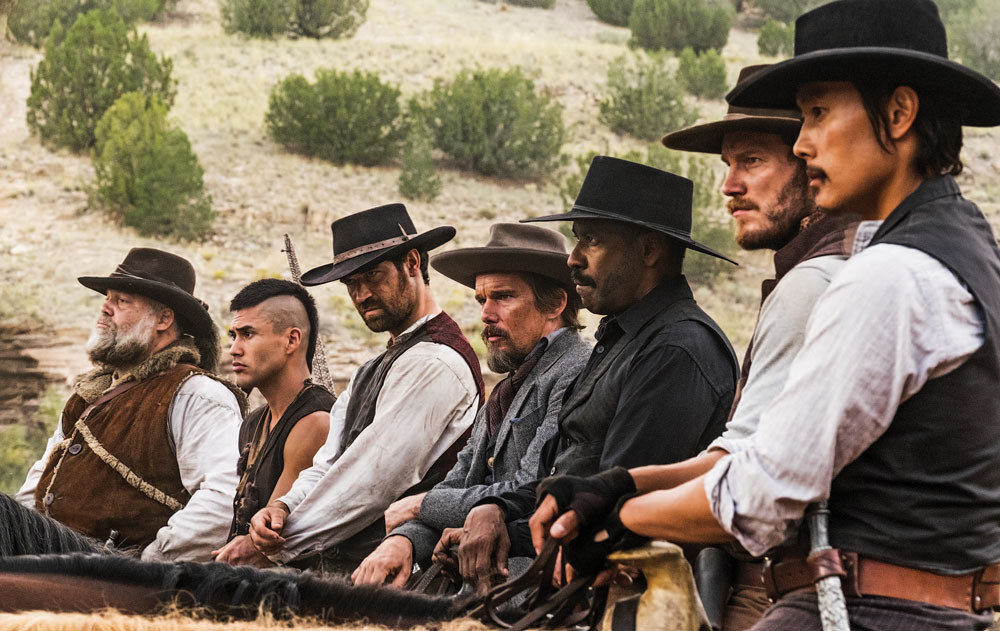
C&I: While you were growing up in Texas, did you ever spend much time around horses?
Hawke: I went to camp outside Fort Worth, and they used to make us ride there. So I rode a little bit there. But, actually, I really learned to ride with Vincent D’Onofrio on The Newton Boys, when I was about 25. I had done just trail riding and stuff before that. But I didn’t really get good. The combination of doing the two westerns back to back has been a big help.
In The Magnificent Seven, I really had to do a lot of riding. For example, there’s a scene where I have to gallop through, firing a Winchester, dropping round after round. I really enjoy riding now. But it wasn’t until I was 45 that I really got any good at it.
C&I: Of course, you’ve probably heard all the stories about actors who audition for roles in westerns, claiming to be excellent horsemen — and then fall right out of the saddle on the first day of shooting.
Hawke: Exactly. That’s why it’s really important, and a lot of fun, to work with the wranglers. A lot of these wranglers I worked with are real old-timers who worked with people like Robert Duvall and Tommy Lee Jones. Some of them can tell you that when they were kids, their father helped train Jimmy Stewart or someone like that. You know, there was an age in movies when learning to sword fight and horseback ride was part of your acting training. This is not really true anymore. But I never bullshit anybody. I wasn’t a good rider at all before these two movies. But by the time The Magnificent Seven was over, I was pretty decent.
C&I: So just how did you finally wind up in the saddle?
Hawke: Well, In a Valley of Violence came first. And that happened because — well, it’s funny that you mentioned Alfred Hitchcock — because I’d had this experience with [producer] Jason Blum, who has had a lot of success with horror films. I’d done two movies with him — Sinister and The Purge — and he was trying to talk me into doing another scary movie. And I said, “You know, I’m done with that genre for now.” So I really tried to encourage him to do something else. I said, “Why aren’t you working inside other low-budget genres? Why don’t you make a spaghetti western?” I talked to him about all the low-budget westerns that have been made throughout the history of movies and how many are so great. He said, “I don’t know.” And he went and had a meeting with Ti West, trying to talk Ti into a horror movie. Ti said the same thing: “I’m done with the horror genre. I really want to make a spaghetti western.”
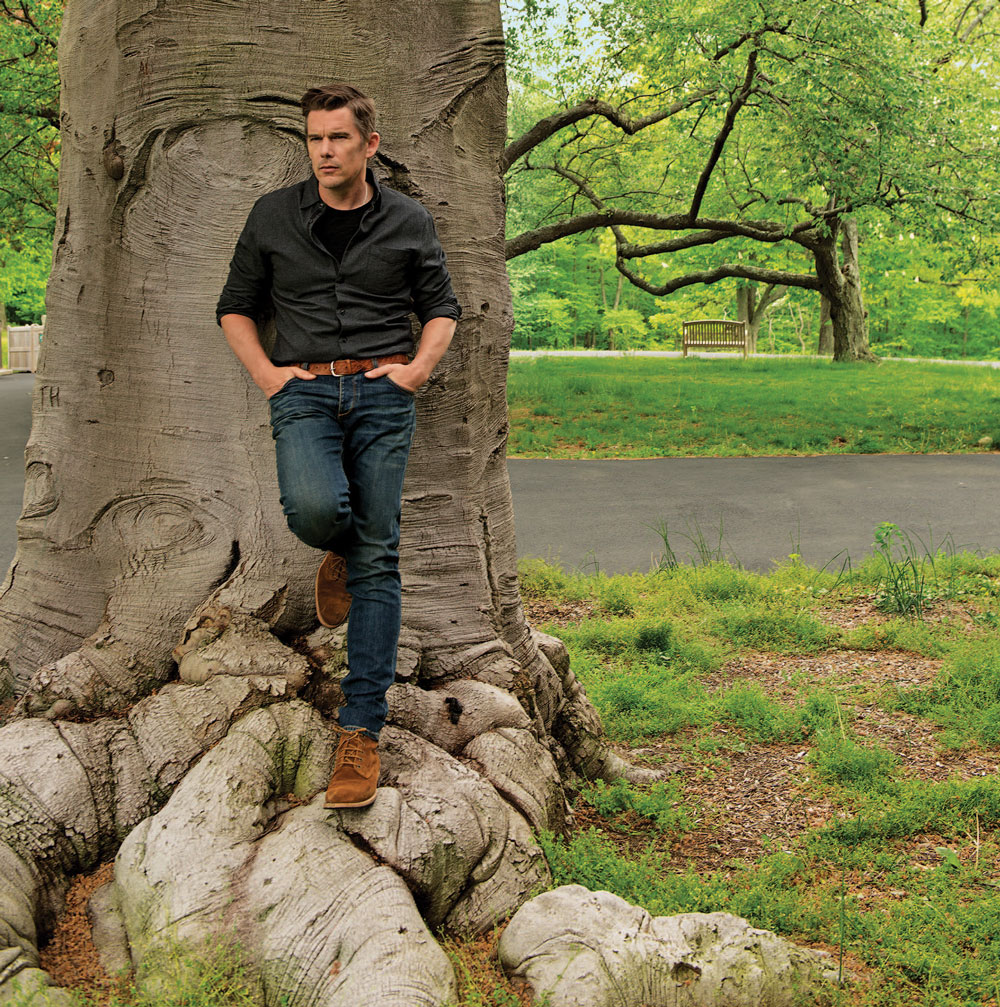
C&I: Great minds think alike. ...
Hawke: [Laughs.] So Jason asked Ti, “Well, do you like Ethan Hawke?” Ti said yes. So Jason said, “Let’s get you two guys together and make a movie.”
C&I: It was that simple?
Hawke: Yes. Ti flew to New York, where I was doing Macbeth onstage at the time. He came to see Macbeth, and we went out afterward and started talking about westerns. We talked about High Plains Drifter and a lot of the Eastwood-Sergio Leone movies that we loved, and he pitched me this idea of a guy and his dog. I was like, “Listen, you write that movie, I’ll be in it.” Next thing I know, a couple months later, the play was over and we were shooting the movie. It really happened spontaneously, in a way that was wonderfully unprecedented for me.
The funny thing is, Ti takes forever to cut the movie. So about six or seven months later, I go to the premiere of The Equalizer. If you remember, that one starred Denzel Washington and was directed by Antoine Fuqua — the same guys I made Training Day with. At the premiere, Antoine Fuqua asked me what I was doing, and I said, “I just finished a spaghetti western.” He said, “Oh, that’s funny. Denzel and I are making a western, The Magnificent Seven.” I looked at him and I said, “Are you kidding me? It sounds to me like there’s six uncast parts — and you better get me in there.”
Next thing I know, I’m making The Magnificent Seven. I spent two summers in a row in Santa Fe making westerns. I just had a great time, and I hope to be making more.
C&I: There have been reports that you and your buddy Vincent D’Onofrio, who also appears in The Magnificent Seven, are planning to make a western that D’Onofrio will direct. True?
Hawke: Yes, that will be the next western that I make. Vincent’s been working on a retelling of the Pat Garrett-Billy the Kid story, and that’s always been one of my favorites. The Wild Bunch and Pat Garrett and Billy the Kid are two of my favorite Sam Peckinpah films. This is a great script Vincent has, so I’m going to play Pat Garrett for him as soon as he gets that all lined up. [Laughs.] I didn’t know I was going to be the James Coburn of my generation. I wanted to be the Marlon Brando of my generation. But I’ll settle for James Coburn.
C&I: Was it before, during, or after your recent western double feature that you started working on Indeh?
Hawke: Actually, I’ve been working on Indeh for the last six years. In a lot of ways, a lot longer, but I’ve been actively working on this graphic novel for six years. It was a lot of fun. I would literally be getting drawings sent to the sets while I shot both movies, and showing them to people I was working with. When you tell people you’re working on a graphic novel, they think you’re nuts. But I’ve been assembling this thing for years, and it’s so exciting for me to have it done.
C&I: What was there specifically about this period, and about Cochise and Geronimo, that captured your attention and made you want to tell this story?
Hawke: It’s such a fascinating aspect of American history that, in essence, is undertaught. There’s so much about the story of the Indian Wars that is not actively taught to young people, and I find [Cochise and Geronimo] such important figures in our U.S. history. Their stories get told in First Nations communities a lot but aren’t told to a larger audience very often.
I think part of what I liked about making Geronimo the centerpiece of the story is that it alleviates a lot of knee-jerk white guilt that keeps people from telling these stories honestly. Because Geronimo was a real badass. He had a lot of his own demons. He’s a very deeply human person. He was a great leader — and also could be ferocious and a terrible person at times. That allowed me to avoid the kind of cliché storytelling where Native Americans are like Buddhist monks. The Apaches were a wild culture, and very profound and very interesting. Geronimo is a figure that only Shakespeare could do justice to. Seriously: All my studying of Shakespeare affected how I wanted to tell this story — very much so.
C&I: Do you think we might someday see a movie adaptation of Indeh? After all, you could say that you already have the storyboard.
Hawke: I think it would definitely be a good movie. But I also think that there’s a case to be made now, with the way that television is exploding and what is possible on TV, that it would be kind of an amazing thing to do as a miniseries. So I’ll be curious to see what the reaction is to the graphic novel and how people like it, and if that possibility raises its head. Because if it did, I’d be interested.
C&I: Getting back to In a Valley of Violence: John Travolta is very effective as the lawman in this small town where most of the movie is set. In fact, he manages to make his character seem like the most reasonable person on-screen. Whereas your character ...
Hawke: He’s [bleeping] nuts, isn’t he?
C&I: Yes. It’s true that bad guys do something terrible to his dog. But then he goes off on this murderous rampage that seems, well, a tad disproportionate.
Hawke: I know. He’s just a nut, man. The movie kind of plays a trick on you because you find yourself rooting for him, and it’s only toward the end you realize: This guy has lost his marbles completely. Instead of storming in like hell, he probably would be better off with a little medication and a hospital, you know? He’s definitely not doing too well.
C&I: But, even so, this is a western. And a man’s got to do what a man’s got to do, right?
Hawke: [Laughs.] Exactly. That’s why you root for him. But he is absolutely nuts.
From the August/September 2016 issue.



